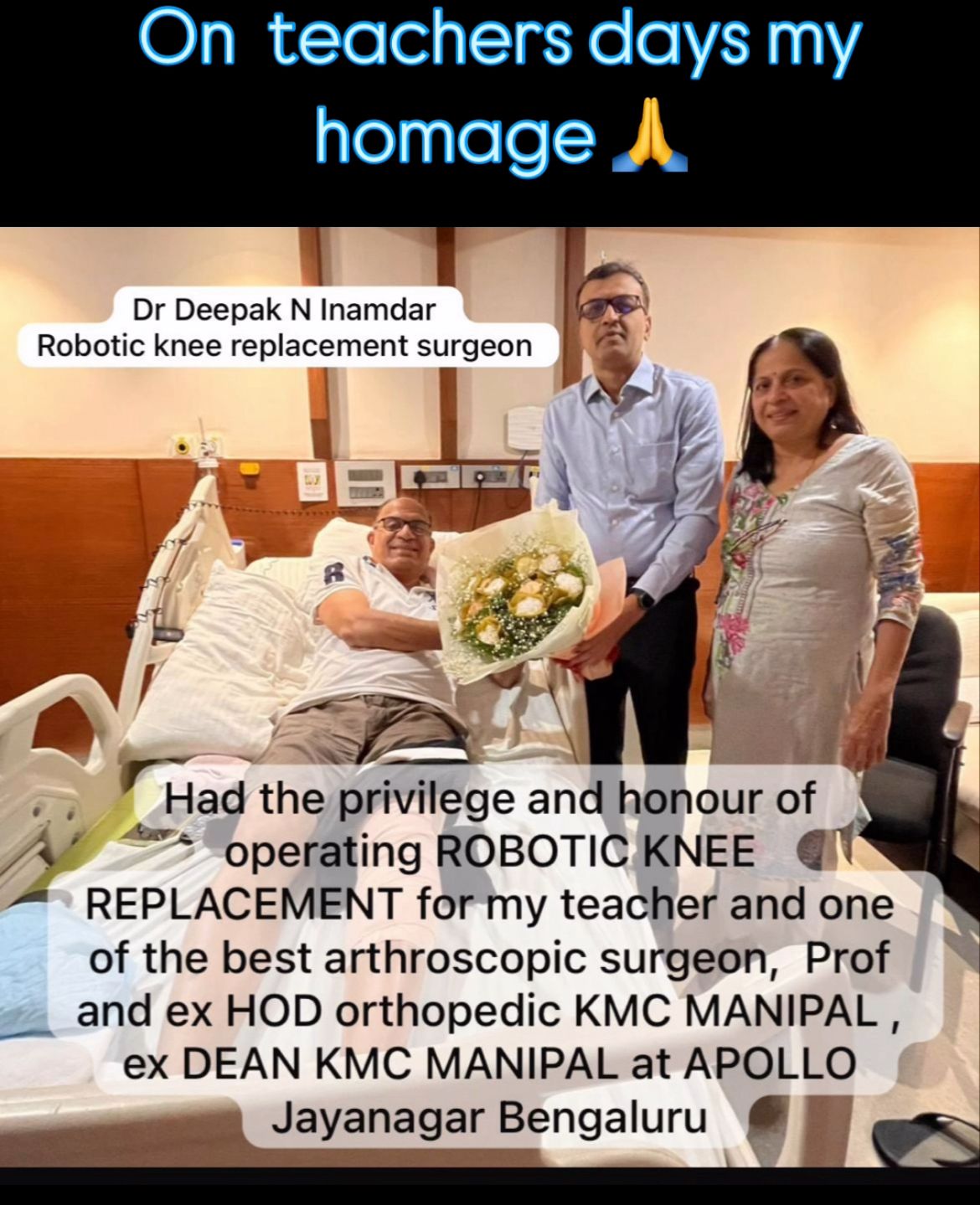Knee Arthritis FAQs
A : Knee arthritis is the degeneration of the knee joint cartilage, causing pain, swelling, stiffness, and reduced mobility. It is most common in older adults but can affect younger people due to injury or genetics.
A : Pain while walking or climbing stairs, swelling, stiffness in the morning, difficulty bending or straightening the knee, and a grinding or clicking sensation in the joint.
A : Treatment options include lifestyle changes, physical therapy, medications, injections, and in severe cases, knee replacement surgery.
A : When pain is severe, daily activities are affected, and non-surgical treatments have not helped, your orthopedic surgeon may recommend knee replacement.
Mako Robotic Knee Replacement FAQs
A: It is a precise, computer-assisted knee replacement surgery where a robotic arm guides the surgeon to place the implant accurately using a 3D model of your knee.
A: Mako provides real-time feedback, personalized planning, and precise implant placement, which leads to faster recovery, better alignment, and longer-lasting results.
A: Yes, Mako is very safe. The surgeon controls every movement; the robot only assists, ensuring precision and reducing human error.
A: Yes, if the patient is healthy enough and meets the criteria, both knees can be replaced in a single surgery for convenience and coordinated recovery.
A: Most patients start walking with support within a day or two. Full recovery usually takes 6–12 weeks, with physical therapy to regain strength and mobility.
A: Most major insurance plans cover robotic knee replacement, similar to conventional surgery. Our team helps with documentation and pre-approval.
A haptic boundary is a virtual safety zone created by the Mako robotic system. It helps guide the surgeon’s instruments during the procedure, ensuring that bone cuts are made only within the pre-planned area. This increases accuracy, protects surrounding healthy tissues, and helps achieve better implant alignment.
Unlike some robotic techniques that use only generic mapping, Mako robotic surgery provides patient-specific 3D planning. This ensures implants are placed in the most natural position for each individual. For arthritis patients, this means less damage to healthy bone and ligaments, more natural movement after surgery, and faster recovery.
The Mako system commonly uses the Stryker Triathlon® Knee System. This implant is designed to closely mimic the natural movement of the knee, offering long-lasting stability and improved range of motion.
The Triathlon knee offers several benefits, including:
- Designed for more natural knee motion
- Long-lasting durability and proven clinical performance
- High patient satisfaction in terms of comfort and function
- Better fit and alignment when combined with Mako’s robotic precision
A: You can schedule your surgery by contacting our hospital’s appointment desk or consulting our orthopedic surgeon directly. Pre-operative tests and consultations are required before finalizing the surgery date.
A: The robotic knee replacement process involves pre-operative planning, 3D imaging of your knee, and precise bone preparation using the Mako robotic arm, which allows for accurate implant placement.
A: Book an appointment with our orthopedic surgeon through phone, email, or the hospital’s online appointment system. During the consultation, your knee condition will be evaluated, and the suitability for robotic surgery will be determined.
A: Mako is a robotic-assisted surgery system that helps surgeons plan and perform knee replacements with high precision, improving alignment and implant positioning for better outcomes.
A: You can view our orthopedic surgeon’s profile, experience, and patient reviews on our hospital website or during your consultation.
A: Our hospital is fully equipped for robotic surgeries, with advanced operating theaters, post-operative care, and experienced staff. You can visit or take a virtual tour.
A: The procedure involves pre-op evaluation, robotic-assisted knee replacement surgery, post-op recovery in hospital, and physiotherapy for rehabilitation.
A: The process includes:
- Initial consultation and assessment
- Pre-operative tests
- Surgery scheduling
- Robotic-assisted knee replacement
- Post-operative care and physiotherapy
- Follow-up and long-term review
A: Possible complications include infection, blood clots, implant loosening, or stiffness. However, robotic-assisted surgery minimizes risks due to precision and planning.
A: Patients undergoing Mako Robotic Knee Replacement report high satisfaction due to accurate implant placement, improved recovery, and better joint function.
A: Modern knee implants, including Triathlon implants, last 15-20 years on average, depending on activity level and follow-up care.
A: The Triathlon knee implant is a highly durable, anatomically designed implant that provides smooth motion and stability, commonly used in robotic-assisted knee replacements.
Post-Op FAQs & Knee Deformities – Mako Robotic Knee Replacement
A: Patients with knock knees (valgus deformity) may require corrective alignment during knee replacement. Proper surgical planning ensures stability, alignment, and improved function post-surgery.
A: Patients with bow legs (varus deformity) can undergo knee replacement with alignment correction. The procedure aims to restore straight leg alignment and balanced knee function.
A: Severe knee flexion deformities (“bent knees”) may require additional surgical techniques. Post-surgery, patients often regain improved range of motion and reduced pain.
A: After knee replacement, patients can walk, climb stairs, perform light exercises, and engage in low-impact activities. Regular physiotherapy accelerates recovery and improves joint function.
A: High-impact activities like running, jumping, squatting, or contact sports should be avoided to prevent implant damage or loosening. Heavy lifting should also be limited.
A: Post-operative physiotherapy focuses on knee range of motion, strengthening muscles, walking with assistance initially, and gradually returning to normal daily activities. Consistency ensures better outcomes.
Thinking About Joint Replacement Surgery? Get Expert Opinion from Dr. Deepak Inamdar!
